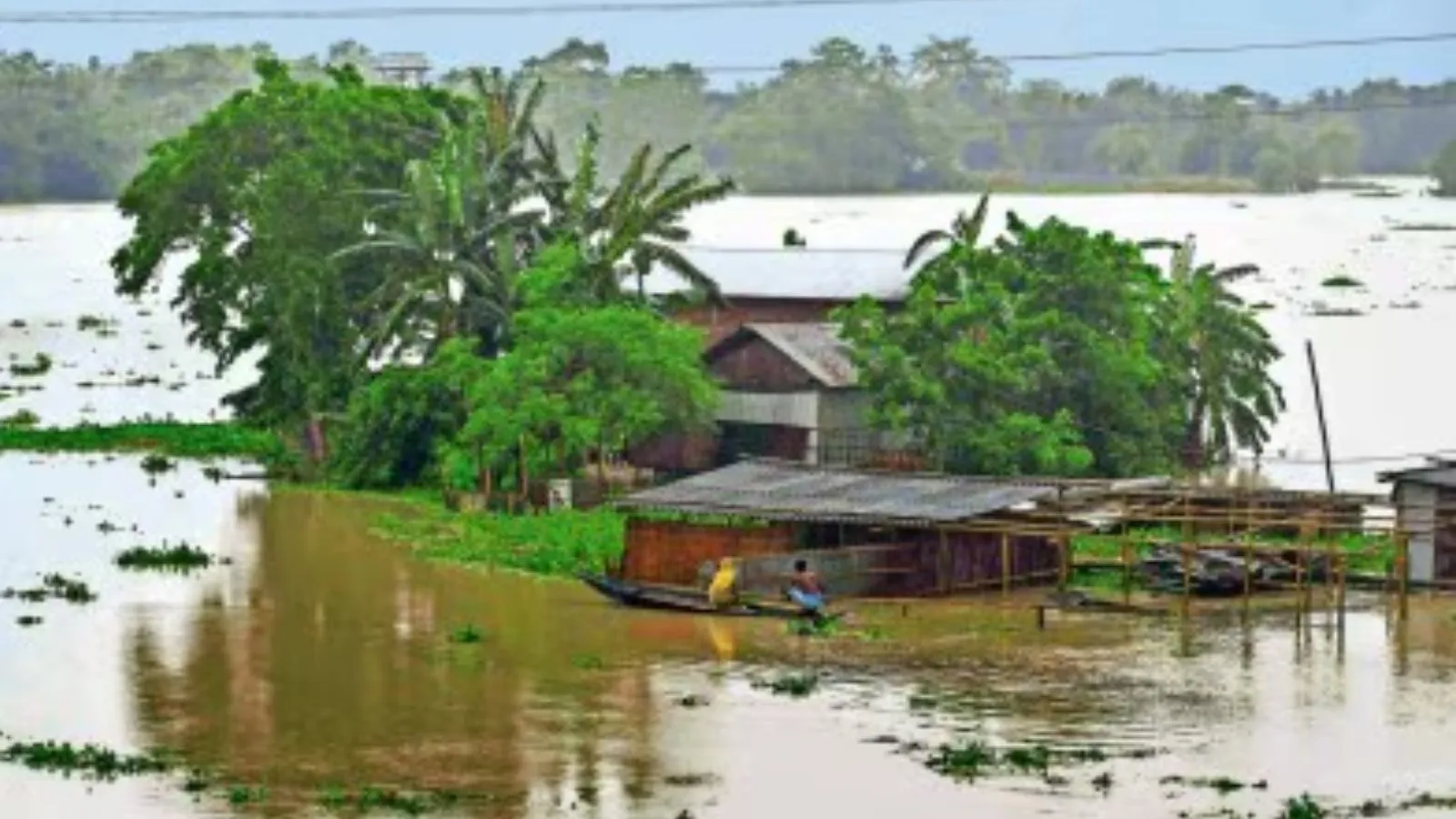A new report on climate change has predicted significant shifts that could impact India’s economy and food security. Droughts and floods are also projected to increase, as per the climate model data, which will have a damaging impact on the economy, health, and food supply of the people.
The climate report ‘Climate Change Projections for India (2021 -2040)’ was released by Azim Premji University on Sunday, outlining projections for India over the next two decades.
The report aims to guide policymakers, educators, and NGOs in developing targeted strategies to mitigate climate change impacts and safeguard vulnerable communities.
Key findings include changes in temperature, monsoon and winter patterns. Changes in temperature poses two scenarios, a moderate “Middle of the Road” emission scenario and a high-emissions path, which is the “Fossil-Fueled Development” emission scenario.
The report projects that by 2057, India’s annual maximum temperature will rise by 1.5°C under the moderate emissions scenario, with this increase occurring a decade earlier under the high-emissions pathway.
Under the low-emission scenario (SSP2-4.5), 196 districts will see a summer maximum temperature rise of at least 1°C, with 70 districts experiencing similar annual maximum temperature changes. Leh is expected to record the highest rise at 1.6°C for both summer and annual temperatures. Meanwhile, winter minimum temperatures are projected to increase by 1.5°C or more in 139 districts.
Under the high-emission scenario (SSP5-8.5), 249 districts are expected to experience an annual maximum temperature rise of at least 1°C, with 16 Himalayan districts exceeding 1.5°C.
Leh will again record the highest increase at 1.8°C. During summers, 517 districts will see a temperature rise of 1°C or more, with 17 districts surpassing 1.5°C and Leh reaching 1.7°C. Winter minimum temperatures could rise by 1.5°C or more in 162 districts, with Anjaw in Arunachal Pradesh seeing the steepest increase at 2.2°C.
Over 24 districts in coastal and eastern Himalayan regions are projected to face wet-bulb temperatures exceeding 31°C, posing severe health risks.
The report also highlights shifts in precipitation patterns and monsoonal activity. Western states likez Gujarat and Rajasthan are projected to see a 20-50% increase in annual rainfall, while northeastern states like Arunachal Pradesh and Sikkim could face rainfall deficits of up to 15%.
The southwest monsoon is likely to intensify in the west while the northeast monsoon weakens. Higher-altitude regions, such as Ladakh and the Western Ghats, are expected to witness increased heavy rainfall, triggering landslides and disrupt horticulture and traditional housing.
At the same time, northeastern states dependent on rain-fed agriculture may face drought-like conditions, threatening rural livelihoods.
Given India’s heavy reliance on monsoons for agriculture, the projected changes in precipitation, coupled with rising temperatures, could disrupt food security, exacerbate flooding, soil erosion, and droughts, and increase the risk of vector-borne diseases.
🗳️ Click here for the latest news and updates from the US Presidential Elections 2024


